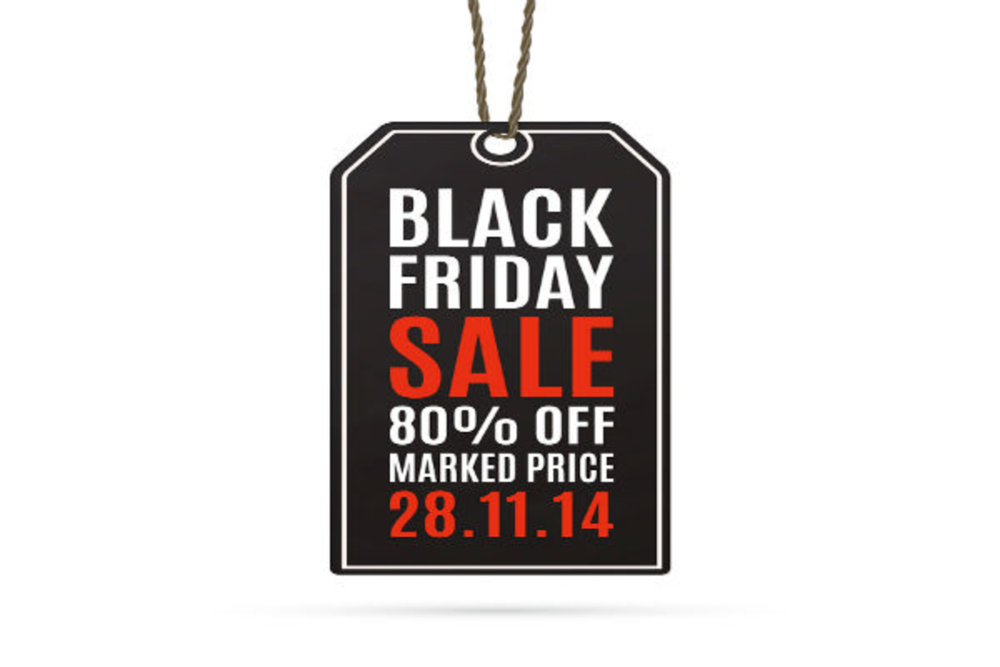People consumed more than just turkey this Thanksgiving weekend. They also gobbled up a cornucopia of sales. According to new data from Custora, Black Friday online sales increased 20.6% compared to last year’s retail holiday. It looks like email served up a healthy portion of these sales, too. After looking at data from more than 100 retailers, the predictive marketing platform provider discovered that email drove 27.3% of Black Friday’s online sales.
As Custora CEO Corey Pierson notes, Black Friday is evolving from a single doorbuster day to a weekend-long buying blowout. Therefore, many consumers are trading in crowds for couches and purchasing products online—forcing brands to reach consumers at home. One of the best ways to do so? Email.
“More and more people are opting to purchase from the comfort of their own home,” Pierson says. “Email is the primary avenue [to do that]. It’s how a lot of customers are discovering what the different deals are for the different brands where they shop. I think brands are getting a little smarter about segmentation and sending more relevant emails to their customers, as well.”
Email even surpassed its contender search this Black Friday. According to Custora’s data, organic search accounted for 19% of online sales and paid search drove 18.5%. This trump was a major feat for email, especially considering that, according to Custora, Google searches (both paid and organic) drove more than 40% of e-commerce sales during the first three weeks of November.
Pierson attributes this shift to a change in consumer agenda. Although search is a popular way for consumers to discover new products and brands throughout the year, shoppers are generally not in this “open-ended” mind-set on Black Friday, he says. Instead, customers want the best deals from their favorite brands. Email can present these offers in an organized way.
“Email is kind of like that direct line of communication for you to inform your customers not only what the deals are but hopefully the deals and promos that are most relevant to them,” he says.
Mobile was also a major factor this Black Friday. In fact, nearly one third (30.3%) of all Black Friday online sales were made on a phone or tablet—up from 22.5% last year.
Just like on desktop, email can be an effective way to get mobile shoppers to convert. Consider the following data from Custora’s July 2014 mobile e-commerce report: After analyzing data from more than 70 million anonymized shoppers, the platform provider revealed that email generated 26.7% of sales on mobile phones versus 20.9% on desktop.
“If you keep the email nice, simple, directed, and targeted toward stuff that people want, especially on something like Black Friday…you’re making it more convenient for the shoppers to find the deals that they want and, often times, the whole checkout process is easier too,” Pierson says.
With Black Friday now behind marketers, CMOs can reflect on the lessons they learned this past weekend and apply these learnings to the holiday weeks ahead. For instance, if brands acquired new customers on Black Friday, Pierson says, they need to determine whether these shoppers will turn into one-time buyers or repeat purchasers. The best way to figure this out, he notes, is by measuring their customer lifetime value.
Deciphering a customer’s lifetime value can determine whether marketers target that customer using an existing or new customer strategy. For instance, if a customer engages and purchases with a brand frequently, then that brand can use that customer’s data to send targeted emails that will be relevant and standout throughout the holiday season. However, if a customer doesn’t buy anything from a brand after Black Friday, then that company may choose to focus on awareness and general promotions, such as by leveraging social or banner ads.
“You get to January and beyond and it’s a really important time to try to work on driving the initial repeat purchases,” Pierson says.
Not only should marketers reflect on what they should do for the rest of the holiday season, but they should also consider what they should not do. Batch-and-blast email marketing, for instance, is a major faux pas, Pierson says. And the same holds true when taking a “sweeping approach” to promotions. Although everyone may like to see a big “30% off” message, he says, this tactic may not apply to every customer or every product.
Instead, marketers should think long-term. For example, brands want to be weary of cutting a deal so low that they actually lose money on it, Pierson says. Not only can this hurt a brand’s bottom line, but it can also discourage first-time customers from coming back to make repeat purchases. Contrastingly, it may work in a brand’s favor to break even on an initial offer if that offer will drive additional purchases from new customers down the road. Looking at customers’ purchase histories can help brands create a promotional strategy and determine which products better attract new versus existing customers.
“You have to balance that out and think a little more long-term with your promotional strategy—just how willing you maybe should go to balance a great deal for the customer but also something that’s good for your business long-term,” he says.
So although Black Friday is over, marketers still have a long way to go this holiday season. Now’s the time to tweak and optimize campaigns based on learnings from Thanksgiving weekend. But marketers better hurry—there’s only about three weeks to go.








